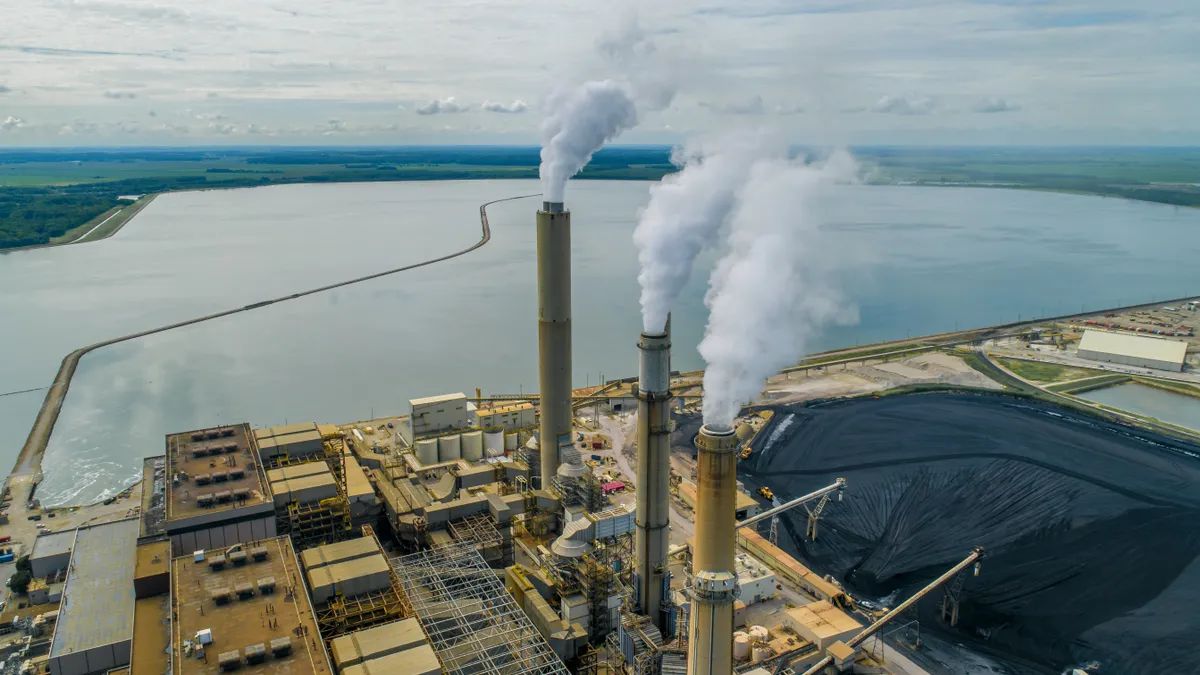Dive Brief:
-
In a move that could add to regulatory requirements for coal-fired power plants, the Environmental Protection Agency on Friday proposed tightening the primary annual air quality standard for fine particulate matter, called PM 2.5, to a range of 9 micrograms per cubic meter to 10 µg/m3 from 12 µg/m3.
-
The EPA is also seeking comments on lowering the decade-old standard to 8 µg/m3 or 11 µg/m3. A final decision on where to set the limit will be based on the comments the agency receives, EPA Administrator Michael Regan said in a press briefing. The agency aims to make a decision in August.
-
Coal plants owners in nonattaintment areas for a revised standard will have to meet requirements outlined in any approved state plans for meeting the federal PM 2.5 limit, according to Julia Criscuolo, ESAI Power manager of renewables and emissions. They may also have to meet “good neighbor” requirements if emissions from their state prevent other states from meeting the standard, she said Thursday in an email.
Dive Insight:
The particulate matter proposal adds to the potential environmental requirements facing coal-fired power plants, a shrinking source of U.S. electricity.
The EPA in 2020 kept the current PM 2.5 standard, set in 20212, despite warnings from scientists and others that failing to strengthen it could damage human health and the environment.
The agency now says studies indicate long- and short-term exposures to PM2.5 can be harmful, leading to heart attacks, asthma attacks and premature death. New epidemiological studies support links between exposure to particulate matter and harmful health effects at levels below the current annual PM2.5 standard level, the agency said in a summary.
The EPA estimates setting the annual particulate matter standard at 10 µg/m3 would produce $17 billion in health benefits in 2032 and setting it at 9 µg/m3 would provide $43 billion in health benefits.
The proposed standards could prevent up to 4,200 premature deaths and 270,000 lost workdays in 2032, according to the agency.
PM 2.5 is formed in various ways, including when gasses from power plants, industrial processes and gasoline and diesel engines react in the atmosphere, according to the EPA.
After the EPA issues a final rule, it will have two years to determine which areas fail to meet the revised standards.
States must submit plans for meeting the standards within 18 months after the EPA finalizes nonattainment designations. The state plans must aim to meet the standards within six years after the EPA issues nonattainment designations.
The EPA is proposing to retain the primary 24-hour PM2.5 standard at 35 µg/m, but asked for comments on whether it should be cut to 25 µg/m.
PM2.5 is a “great concern” to already overburdened and vulnerable communities of color and indigenous and low-income communities, the EPA said. The agency proposed revising its monitoring requirements for particulate matter to better protect those areas.
There are 15 counties, all but one in California, that don’t meet the current PM 2.5 standard, according to the EPA.
There were 219.4 GW of coal-fired generation in the U.S. in October, down from 283.7 GW five years earlier, according to the most recent Federal Energy Regulatory Commission’s monthly infrastructure report. The report indicates that about 19.1 GW is preparing to retire by October 2025.















